John Hurrell – 16 November, 2013
There is a sense here that Babbage is perturbed at the onslaught of a youth culture commodity fascism: a huge market seemingly easily enticed. The cutesy-pie, colourful, wowie zowie branding of Adshel is lampooned in a couple of logo templates ('Templated Mind') hanging by their corners on the wall, while other logo variations are presented on a flat floor work ('Flexible Identity'), the five motifs peppered with guiding LED lights like meandering runways.
With this Gloria Knight exhibition Henry Babbage presents a display that is typical of his generation (indeed this gallery) with its keen eyed interest in technological development, and through art, layering tropes by systematically juxtaposing references to different often ‘wearable’ corporate products. The companies that get Babbage’s undivided attention are Adshel with their bus shelters (‘advertising funded street furniture’) with their urban immersive promotions, Google Glass (with its spectacle frame, voice-controlled computer) and Narrative (a tiny clip-on automatic camera) - all treated with a curious mixture of mockery and rapt admiration.
There is a sense here that Babbage is perturbed at the onslaught of a youth culture commodity fascism: a huge market seemingly easily enticed. The cutesy-pie, colourful, wowie zowie branding of Adshel is lampooned in a couple of logo templates (Templated Mind) hanging by their corners on the wall, while other logo variations are presented on a flat floor work (Flexible Identity), the five motifs peppered with guiding LED lights like meandering runways, and the trajectory for the ambitious go-ahead (but malleable) subject interrupted with 3D printed replicas of Google Glass and Narrative products. This work is the central item of the show, despite being at ankle level.
Another work, Verbal Identity, is a shelf made of transparent acrylic that has marketing bumph about Adshel printed on its upper surface. Sandwiched inside are shattered glass fragments from a vandalised Adshel bus shelter. On another wall is Shared Endorsements, a lightbox displayed a font that uses scratched letters made with a vandal’s glass cutter to render the letters. As is usual with design mock ups, the displayed text is gibberish, a randomly selected verbal hodgepodge.
With the two remaining lightboxes, one again, Atmospheric value (Raw), is about the glass on its front, a shattered glass ‘star’ printed over it, an invitation for destruction as it were. The other (Guidelines for Speaking) uses readymade design images available online. The splintery shards of triangular grey tones again seems to allude to smashed glass, and three stylised circular forms (in sequence) might be a rock repeatedly beating on the surface. Many of Babbage’s titles are drolly ironic, while the theme of ‘glass’ is multilevelled - going beyond the Google corporate and Adshel. It could also refer to the Empiricist philosophers of Locke, Berkeley and Hume with their interest in the mediated (nontransparent) senses.
With the Google Glass, Narrative technology, and Adshel’s broken glass, there is a paradox that within Gloria Knight Babbage is advocating a museum without walls, a portable conceptual ‘gallery bubble’ that travels with the roaming mobile body of the art enthusiast. Art without limitations or shelter seems to be the result, and maybe it will disappear. Welcome to a world without glass.
John Hurrell

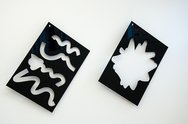
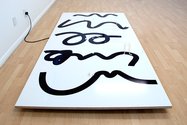
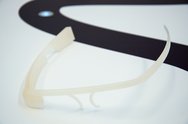
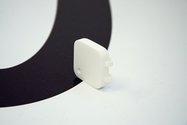
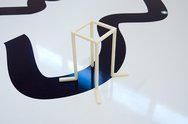
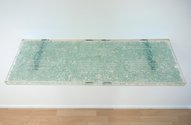
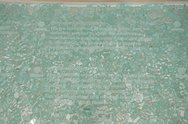



 Two Rooms presents a program of residencies and projects
Two Rooms presents a program of residencies and projects Advertising in this column
Advertising in this column



This Discussion has 0 comments.
Comment
Participate
Register to Participate.
Sign in
Sign in to an existing account.